
My name is Indira Borcoș. I am a licensed psychologist in Romania, master’s degree in clinical and health psychology based on cognitive behavioral therapy in Barcelona and hypnotherapist. In addition, I have specialized in several methods used in psychotherapy: NLP, EFT, EMDR which I will briefly describe below. In 2020 I passed a state exam at the German Department of Health to obtain the title of “Psychotherapist Heilpraktiker” and to be able to work as an approved psychotherapist (according to the HeilprG law) in Germany.
I present you my collegue:
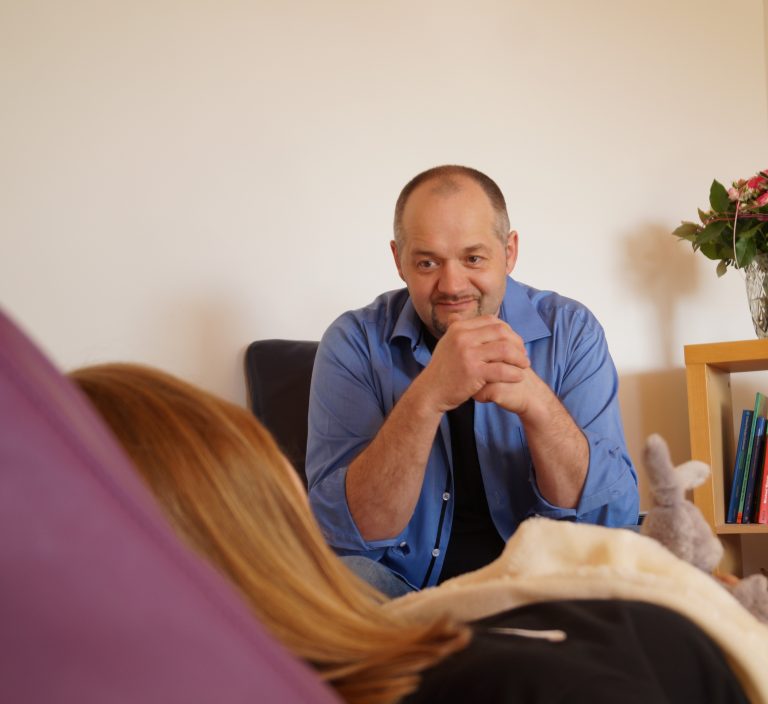
Sven Nähr
Heilpraktiker in psychotherapy
Hypnotherapist
Integration Management Consultant
Here should write who I am, what marital status I have or what courses I have taken so far…
but more importantly, why did you end up on this site? Looking for an answer? Maybe a way out? Maybe even looking for you?
If you will find what you’re looking for, I can’t promise, but together we’ll try to find a new way to clarify the answers and bring you closer to yourself little by little.
Our story as a team began during our specialization as Heilprakiker in psychotherapy, there being colleagues, we often collaborated together to learn and practice in our profession. This is how the idea of opening a cabinet together was born in which we can put into practice the various and multiple methods learned and the creative ideas that we have, with which we want to support people who are at a standstill and need psychological, therapeutic support, so that therapy sessions are as effective as possible.
After the initial discussion and the determination of your individual needs, we will look for a common path for your well-being and health.
A goal into a new future, a fresh and clearer path in your life, emerges from a variety of paths and therapy options.


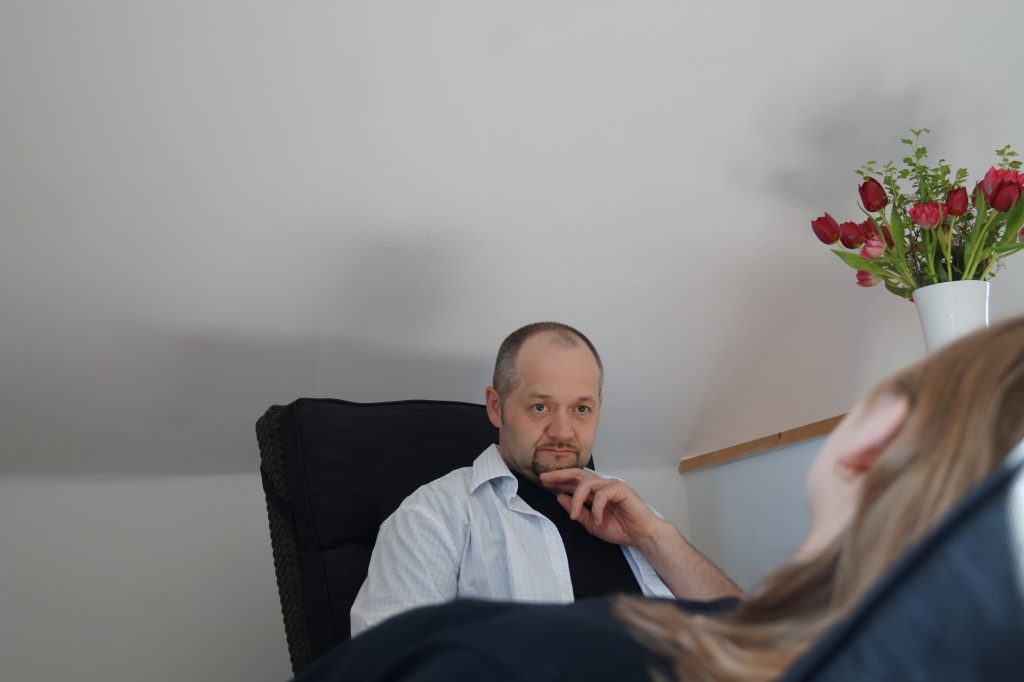


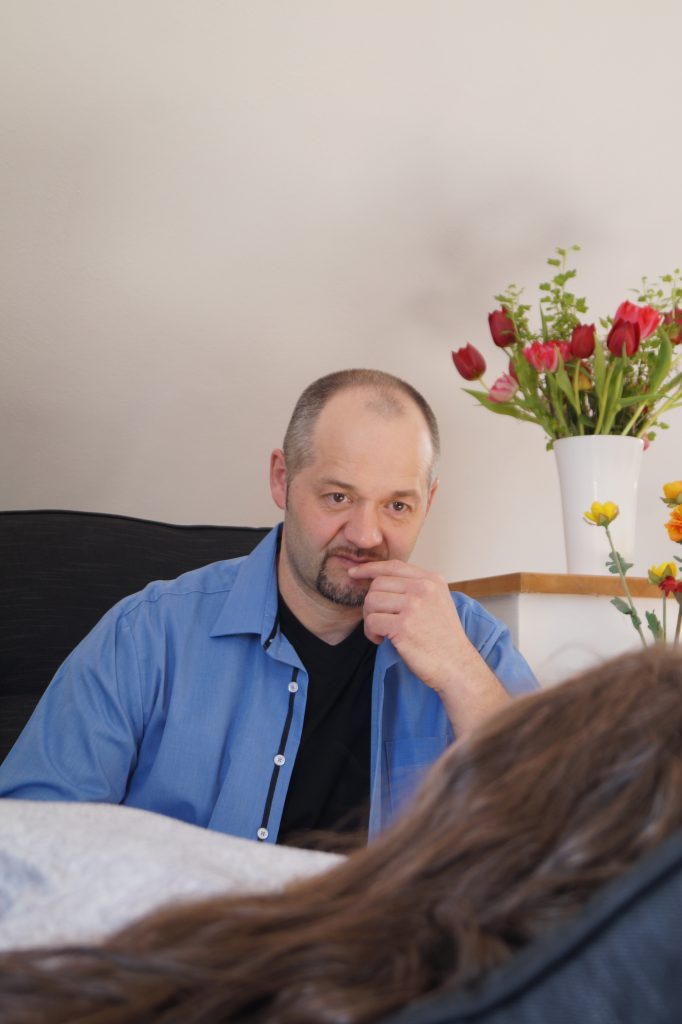
Anxiety is one of the so-called primary emotions, along with joy, sadness, fear, anger, surprise and disgust. Anxiety disorders are the most common mental disorders, with a lifetime prevalence of around 30%. This means that almost one in three people will suffer from an anxiety disorder in their lifetime. A number of unpleasant, intense physical symptoms may occur. These are usually accompanied by a subjective state of fear, anxiety or panic. States may or may not occur in association with a particular situation/object. By definition, they exceed the “normal” feelings of anxiety and create additional suffering through the occurrence of these symptoms. A key feature of phobias is the inappropriateness of the fear response with respect to triggering situations or objects. In panic disorder or generalized anxiety disorder, the fear usually occurs for the affected person without any apparent cause.
In primary anxiety disorders, two main groups can be distinguished:
1. phobic disorders with situational or object-related fears and
2. other anxiety disorders, in which the fears either occur in the form of acute panic attacks or, as in generalized anxiety disorder, that have a more diffuse character.
In addition to the primary anxiety disorders, secondary anxiety syndromes requiring treatment may also occur in some somatic, psychosomatic, and psychiatric disorders, which should therefore also be considered in the diagnostic workup. The intensity of the anxiety reaction depends largely on how threatening the person considers a situation to be. If it is a life-threatening danger, the death anxiety that occurs is quite appropriate, i.e. “realistic”. In the case of pathological fear, on the other hand, there is a clear disproportion between the real threat and the fear experienced. This disproportion can be observed especially in phobias.
In general, treatment of anxiety consists of either psychotherapy (individual or group) or medication, or both combined, depending on the case. The most important thing is to talk to a specialist about your condition.
IMPORTANT!
Medications do not cure anxiety! They reduce and dampen the symptoms. So, normally, the doctor will not only prescribe medication to treat anxiety, but will also recommend adjunctive anxiety therapy. CT as well as hypnosis have proven effective in the treatment of these disorders.
If you suffer from these or similar symptoms yourself or if you have someone close to you who shows such symptoms and you are looking for a way to deal with them, we will be happy to advise you. You can use the form on this page, call us or send an email to iborcos@isylife-psychotherapie.de.
If you feel exhausted and your job is putting more and more strain on you, you may be suffering from burnout syndrome. You are not alone in this problem.
Chronic stress is the most damaging form of psychosocial stress. Work-related stress is one of the most serious and widespread forms of chronic stress and often involves various types of stressors, such as work overload (demands exceed the person’s abilities; e.g., people caring for a family), interpersonal conflicts (e.g., between the worker and the boss), role conflicts (e.g., when there are incompatible demands between work and family demands), and stressors, due to job restructuring.
A particular consequence of work stress is the so-called burnout syndrome.
Burnout is a clinical term applied to the work environment that essentially refers to workers who perform tasks such as caring for and interacting with others. This includes, among others, doctors, nurses but also in the education sector, e.g. teachers, educators. Also included are public administration and the police.
Its first conceptualization goes back to the American psychiatrist H. J. Freudenberger, who in 1974 described a series of physical and mental reactions he observed in a group of people working in a detoxification clinic. After a year, many of them felt exhausted, irritable, and had developed a cynical attitude toward their patients and a tendency to avoid them.
Burnout is a multidimensional construct consisting of at least three different dimensions: emotional exhaustion, depersonalization, and low personal performance at work. Burnout has been linked to significant problems such as absenteeism and sick days for health reasons.
If work is getting on top of you, you no longer see any sense in your working life, you feel empty and burnt out then write to us we will be happy to advise you. You can use the form on the page, call us or send an email to iborcos@isylife-psychotherapie.de.
Without realizing it, everyday stress leaves its mark on professional or family behavior. Intimate space is not an understood concept and therefore cannot be accepted or respected. The reactions we develop when we are attacked by the persistence and the different educational level of the people we come in contact with depend on the permeability or immunity to stress.
The current situation and instability are just a few of the external factors that have a strong influence on the human psyche. If we add to these the internal factors – the predisposition to emotional instability, the low level of coping or the lack of ability to adapt to the environment – then we have all the ingredients necessary to develop an aggressive and intolerant behavior.
If you are in an unpleasant conflict situation and see no way out then you are in the right place! Conflicts can be solved wonderfully through various methods that can be applied to yourself. You can use the form on this page, call me or send me an email to iborcos@isylife-psychotherapie.de.
The couple relationship has changed a lot in the last decades. Over generations, the meaning of relationships has changed. For example, today the Internet (dating sites) gives us almost unlimited possibilities. Stressors such as infidelity, children, financial problems or high stress at work put a lot of pressure on the couple and the relationship. If now the couple does not take active measures, it usually comes to separation.
One of the most effective solutions is couple therapy. This consists of individual and couple therapy sessions. A large component is talk therapy and joint actions, which are specially adapted to each couple individually.
For couple therapy we have worked out special methods, together the couple is accompanied by two therapists (if this is desired). Do not hesitate and write to us! You are welcome to use the form on the page, call me or send me email to iborcos@isylife-psychotherapie.de.
Stress is characterized by an increased activation of the organism. Generally speaking, the aim is to adapt to changing conditions. In an evolutionary sense, stress is a reaction to alternating environmental conditions that serves survival.
Stress is expressed at various levels of the organism: physiologically in the form of e.g. sweating and palpitations, behaviorally as aggression and restlessness, cognitively through altered patterns of evaluation of one’s own situation. This can then lead to a variety of health impairments, including in particular classic psychosomatic disorders. Stress has been declared the greatest health threat of the 21st century by the World Health Organization (WHO). Stress can manifest itself in the most diverse areas of life as well as in all age groups.
A distinction is made between external stressors (flooding with sensory stimuli, pain stimuli, dangerous situations), prevention of the satisfaction of primary needs (water, food, sleep), performance stressors (excessive or insufficient demands, fear of failure, fear of criticism), social stressors (isolation) and psychological stressors (conflict, uncertainty, fear of loss of control) disruptive, frustrating events in daily life that affect well-being and are perceived as threatening, distressing, loss-related, or frustrating. Problems with body weight and one’s appearance, health problems of a family member and resulting need for care, annoyances with household management, work stress, money worries, etc. In multimodal training programs, the following techniques are mainly used:
– Psychoeducation
– Relaxation techniques (mostly PMR, Progressive Muscle Relaxation, according to Jacobson, as explained below)
– training of body awareness
– cognitive restructuring or recognizing and changing dysfunctional evaluation patterns
– problem solving training
If you suffer from these symptoms, I will be happy to advise you. You can use the form on this page, call me or write an email to iborcos@isylife-psychotherapie.de.
Grief is a natural innate ability, a complex phenomenon, a natural reaction of the whole personality when it comes to letting go, saying goodbye and separating from people, things and abstract things. Grief can often be painful and prolonged, but it is a natural process.
Grief is a complex emotion in “stressful life events” (e.g., separations) with varying intensities, accompanying feelings (pain, anger, despair, fear, powerlessness, dejection, etc.). Grief is a psychological and social process of processing losses and damages to personal (sometimes collective) integrity. If the process is successful, it leads to integration, reorientation, perhaps creativity. However, it can also lead to pathological grief with psychosomatic illness, depression, anxiety, social.
Through the loss of a loved one, we often lose a part of ourselves, you feel a burning deep painful feeling of inner emptiness. Most of the time, only time can help you get over such consuming pain.
If you are currently experiencing a grieving process, we would be happy to accompany you on this journey. Please contact us. You can use the form on this page, call us or send an email to iborcos@isylife-psychotherapie.de.
Depression is a deep suffering that starts gradually. It can start with sadness, the affected person no longer feels joy, is depressed, pessimistic and has a depressed mood. They are no longer interested in going to work, no longer feel like meeting friends or leaving the house. They no longer enjoy the pleasant events of life, children, hobbies. The joy of life disappears and everything seems purposeless and useless to them. This gives a feeling of hopelessness that intensifies (they see only the “empty side of the glass”). They no longer see the way out of the situations they find themselves in. They have a feeling of helplessness, life becomes more and more difficult. Situations that once seemed easy to resolve now become an effort / source of suffering.
Not every state of sadness is depression. In most cases, when we experience a loss in life, we will feel sadness and even some of the above symptoms. This is part of the natural healthy process. But if these feelings of sadness, despair are excessive and persistent, or if they are ignored (suppressed), they can be a basis for the development of a depressive episode and a mental disorder.
Depression is often associated with anxiety (90% of cases).
Psychological treatment for depression is important not only for the treatment of the present episode, but also for the prevention of new episodes after discontinuation of drug treatment.
Treatment for depression consists of the usual mixed medical and psychotherapeutic approach. Mild or occasionally moderate depressive disorders can be treated with psychotherapy. In severe cases, medication (obtainable only from a physician) is required, along with adjunctive psychotherapy.
If you feel depressed, joyless, constantly exhausted, or if a loved one shows these or the above symptoms, we will be happy to advise you on this topic. You can use the form on this page, call me or write me email to iborcos@isylife-psychotherapie.de.
Obsessions are thoughts, images, impulses that appear repeatedly and persistently mentally without being able to control or suppress them. Examples: the thought of not getting sick, not dying, being deceived, etc. Compulsions can be mental actions, such as counting, praying, repeating; or behavioral actions: Hand washing; tidying; checking. They are intended to control or suppress obsessions in irrational, unjustified, or exaggerated ways. These obsessions or compulsions cause significant suffering. It affects a person’s normal life.
Cognitive Behavioral Therapy and Hypnosis have proven to be effective in the process of curing compulsions.
If you have such or similar symptoms yourself, we will be glad to consult you. You can use the form on the page, call us or write an email to iborcos@isylife-psychotherapie.de.
Marked fear, persistent and exaggerated / irrational, which may lead to a panic attack. The presence or possibility of exposure to a particular object/situation (airplane, heights, animals, injections, etc.) can trigger a phobia. Also avoided is the fear of being exposed to the feared stimulus. This is done through withdrawal and isolation. Through this avoidance, the quality of life is seriously affected. By an airplane phobia for example, affected persons refuse to travel. and much more.
If you have these symptoms yourself, we will be happy to advise you. You can use the form on the page, call us or send an email to iborcos@isylife-psychotherapie.de.
Can hypnosis help the large at-risk group of smokers achieve abstinence? The answer is yes. In fact, hypnosis has a long history as a habit-control technique, dating back to tobacco control efforts in the mid-19th century. Given that cognitive-behavioral techniques are effective in their own right in treating smoking cessation, and that many people are motivated to participate in smoking cessation programs that include hypnosis, we believe that hypnosis can be a useful adjunct to a more comprehensive smoking cessation treatment.
We will try to teach you methods you need to break habitual patterns, learn to deal with any difficulties you may encounter, and keep the successes you achieve here. You can then choose the technique or method that makes it easier for you. We will not only explain the costs of smoking, but rather we will make you aware of the benefits of being a non-smoker and how proud you will be when you reach your goal of finally being smoke-free. If you want to do this, you will succeed. The willpower activated in you during hypnosis can make it easier for you to become and stay smoke-free for life. One’s own motivation is one of the most important factors in becoming a non-smoker.
If you have decided to take this step contact us. You can use the form on this page, call me or write me an email to iborcos@isylife-psychotherapie.de.
The regression through hypnosis is a time travel into the own past up to the own birth or even into a time before this current life (also called reincarnation therapy). The theory of this method says that the cause or origin of current difficulties or problems can lie in a past life, these are uncovered or found it can come to a resolution of the problems. Whether you believe in reincarnation or past lives is not important. It is more important that you let yourself fall and be carried by the images, voices, or emotions that may come. To be able to use a regression better for yourself, experience or a pre-hypnosis would be useful.
If you want to make this journey through time, we will gladly accompany you there. You can use the form on this page, call me or write an email to iborcos@isylife-psychotherapie.de.
Problems in the area of sexuality can take many different forms. Sexual behaviors, experiences, or impairments should only be labeled a disorder if either the individual suffers from it himself or herself, or if others in direct contact with the affected person are affected.
Impairment of sexual functioning may be an adequate response to certain life circumstances; a thorough diagnosis should allow a decision to be made as to whether therapy is indicated.
The occurrence of sexual dysfunction is not a sign of mental illness. Sexual dysfunction is defined as an impairment of sexual functioning during sexual intercourse (coitus). They describe
– A deficiency or decrease in sexual desire,
– an impediment to performing coitus with penetration (penetration),
– an absence or lack of control over the occurrence of orgasm,
– non-organic pain during coitus,
– a lack of satisfaction during undisturbed coitus.
The goal of therapy is the elimination of a negative symptomatology. In many cases, this involves the reduction of inhibitions or the ability to control sexual function. The suffering of the affected person or his or her partner prompts a visit to a therapist. The diagnosis can be given both in the case of occasional sexual intercourse in casual acquaintances and in a long-lasting partner relationship, in some cases even without the existence of partner relationships or contacts (e.g. erectile dysfunction in men or orgasmic dysfunction in women).
Sexual dysfunction can be primarily organic or psychological. However, it can be assumed that impairment of sexuality often has psychological effects as well.
It matters whether a person with sexual dysfunction sees a therapist alone or with a partner. In the treatment of sexual dysfunction, a couples therapy approach has been found to be particularly effective. The main prerequisites for couples therapy are that the couple is motivated to maintain the partnership, that there are no secondary sexual relationships, and that the dysfunction is not exclusively organic. This can be provided by either one or two therapists of opposite sexes.
Since some of these disorders may have physical causes a preliminary clarification would be useful.
We offer absolute discretion.
We will be happy to advise you. You can use the form on this page, call me or send an email to iborcos@isylife-psychotherapie.
Many events have awakened a new awareness within medicine and psychotherapy in recent years, which can cause traumatic life events, psychological consequences that require treatment. Acute treatment in these cases is preventive and important to avoid complex traumareactive long-term consequences.
Such events can be wars, terrorist attacks, technical catastrophes (e.g. train accident Eschede); kidnappings, affected/ acquaintances or relatives of a suicidal person and many more. The range of what and how traumatizing is unfortunately very large and depends entirely on the psychological condition of the individual.
Repeated or more complex traumatic experiences, especially in childhood and adolescence, also cause more complex trauma symptoms.
If traumatic experiences occur in a very sensitive and thus also vulnerable phase of personality development, a high prevalence of illness can be assumed. Clinically, there are typically symptoms of personality change and personality disorder that go beyond the characteristics of classic PTSD.
Classification of trauma types according to Terr (1991):
Short-lasting traumatic events (type I traumas).
Natural disasters
Accidents
Technical disasters
Criminal acts of violence such as robberies, shootings
Longer lasting, repeated traumatic events (Type II traumas)
Multiple torture
Hostage-taking
Imprisonment in war
Repeated sexual or physical violence in the form of abuse, maltreatment as well as rape
Traumas usually take place in complex social situations or have far-reaching effects on the psychosocial environment; this is also true for Type I traumas. Relationships with partners and the family are often affected, as well as usually the professional performance and ability to work. Trauma often results in people withdrawing from their familiar living environment and isolating themselves.
Research has shown that incredibly complex physiological and neurological changes happen in the brain and body, all produced by traumatic stressors. These changes in the brain and the body’s stress response system are adaptive in crisis-that is, they are essential to surviving the danger or damage of trauma. However, over an extended period of time, these neurobiological changes in the brain system can lead to impairments in the processing of perceptions and cognitions (thoughts, beliefs, plans, decisions) and feelings that can fundamentally alter a person.
Traumatic disorders, if left untreated, show a high tendency to become chronic and are often masked by comorbid mental health disorders (depression, anxiety, etc.).
It is a fortunate fact that in recent years there has been extensive public discussion and awareness of the importance of traumatic life experiences and their treatability. It is to be hoped that this will help to avoid long-lasting chronification processes.
EMDR and Cognitive Behavioral Therapy have demonstrated a Level I evidence score, meaning that these methods are very effective in treating and alleviating symptoms.
Among other things, we work with these methods, if you now suspect that you are suffering from the consequences of a traumatic experience, feel free to contact us. You can use the form on this page, call us or write to iborcos@isylife-psychotherapie.de
Interest in hypnotic techniques for weight loss has grown as it has become clear that hypnosis can complement a variety of therapeutic procedures. Hypnosis has proven to be an effective method in the process of losing weight, especially when used as a supportive treatment in addition to cognitive behavioral therapy. We use compound techniques to help you in this process. You may have heard various stories, myths about hypnosis and its effectiveness, but we are absolutely convinced that it is worth trying.
If you are ready to take this step we are here to help you. You can use the form on this page, call us or write an email to iborcos@isylife-psychotherapie.de.
We accompany you in all physical or psychological disorders not mentioned here, the prerequisite for this is that they have been clarified and examined by a specialist.
As a family member you often have the difficulty to express your own problems in order not to burden the affected person additionally. In such situations we are happy to accompany you through this difficult time.
If you feel that you need psychotherapy, coaching, counseling, relaxation, contact us! You can use the form on the page, call us or write an email to iborcos@isylife-psychotherapie.de.
Therapeutic methods
- What is cognitive behavioral therapy?
It is the psychological therapy that changes behaviors, thoughts and emotions that cause problematic behavior. The basic idea behind CBT is that our thoughts and feelings play a fundamental role in our behavior. Cognitive behavioral therapy is action-oriented; the therapist and patient work together to identify and solve problems.
In it we combine:
– Behavioral Therapy to eliminate or modify certain behaviors or behaviors that cause discomfort, while acquiring and improving the other desired and healthy behaviors.
– The Cognitive Therapy to work on negative thoughts and beliefs and change them to positive, healthy modification to improve the behavior and emotional state.
– Emotions are related to thoughts, the way we think is related to how we feel and how we behave.
- Goals of cognitive behavioral therapy
To help people solve the problems that affect them in their daily lives and to be able to change inappropriate thinking, inappropriate behavior, and distressing emotions and affects in order to achieve that the person increases their individual and social well-being. We provide you with tools, methods or techniques that make it easier for you to deal with the problem.
The goal of cognitive behavioral therapy is to identify negative thoughts and replace them with positive thoughts. To change maladaptive behaviors and thus achieve favorable behaviors for you.
- Characteristics of cognitive behavioral therapy
1. it is fast and effective compared to other psychotherapy modalities.
2. It is an active-directive process that the therapist facilitates through active listening, interventions, reflection.
3. one works between sessions, on the aspects and behaviors worked on during the session, in order to put them into practice.
4. to establish a collaborative relationship between therapist and patient, in which the role of the therapist is to advise and guide the changes that he wants to promote in the patient.
5. it is an effective clinical intervention, a psychological therapy with short and long term improved results.
Clinical hypnosis, as defined by the American Psychological Association and the British Psychological Society, is an intervention procedure based on suggestion techniques. Thus, it is that the hypnotherapist, using different types of suggestions helps the person to generate in his imagination the problem experience, as well as to recognize emotions, thoughts, physiological reactions, etc., associated with this experience is the aim of influencing perception, feelings, thoughts and behaviors and facilitating change.
Clinical hypnosis is a valuable intervention in the treatment of a variety of psychological and medical problems, helping to improve the quality of life for many patients. Research shows that when used as an adjuvant to other therapies/medical interventions, it increases the effectiveness and/or efficiency of such interventions. In addition, hypnosis is used in other areas as well as medicine, e.g., surgery, dental interventions, sports, forensic psychology, study and concentration habits, etc. Finally, it should be remembered that hypnosis is not only a set of applied procedures, but also a field of study that has a lot of theoretical and experimental research, with implications in various central areas of psychology and medicine, such as perception, memory, neuroscience, etc.
An effective technique for the treatment of typical psychological disorders such as anxiety, depression, post-traumatic stress disorder, but also in psychophysiological disorders such as pain management, gastrointestinal disorders, diabetes or asthma, among others, as well as scientifically proven benefits of its use in various medical contexts (preparation for surgery) , ontology, obstetrics, pediatrics, dentistry, etc..
However, it is also true that there are many myths and misunderstandings about the goodness of clinical hypnosis, largely promoted by the media, bad practices or their relationship with esoteric environments that cloud the goodness of this procedure and cause a rejection of its use. Therefore, among the most relevant myths are the following:
Myth 1: Hypnosis does not belong to the field of scientific psychology. Those who practice it are usually charlatans, healers or showmen. The people who get better with it are gullil, ignorant and “addicted”. This is FALSE because several personalities of psychology have used and studied it, such as Wundt, James, Paulov or Eysenck, as well as supported by different scientific societies and taught in different universities in the USA, Canada, Australia, Germany, UK, Spain.
Myth 2: Hypnosis can leave the person in trance “hooked” so that they are unable to “come out of the hypnotic state”, are diminished in will or go into a frenzy. Empirical evidence has shown that this belief is not true , although it is true that some people have more difficulty than others in coming out of the state of hypnosis, just as from other relaxation techniques(e.g. meditation).
Myth 3: It develops changes in healthy individuals. Individuals with psychopathological problems may get worse with hypnosis. There is no empirical evidence that hypnosis causes negative side effects!
Myth 4: Hypnosis causes a sleep-like “state” in which the person exhibits special characteristics. If such properties are not achieved, the person will not be hypnotized. You can only be in this special situation if you have received a method of hypnotic induction. In reality, nothing “special” or “spectacular” has to happen in the reaction of a hypnotized person. In any case, it all depends on the person himself, his expectations and beliefs about hypnosis.
Myth 5: Hypnosis eliminates and overrides the person’s voluntary control. It becomes an automaton in the hands of the hypnotist so that it can commit criminal, antisocial, immoral or social taunts. While it is true that under hypnosis action is automatic, this does not mean that it is “uncontrolled” or involuntary. In reality, the person never loses their decision making or volitional ability.
Myth 6: Hypnosis causes unusual, extraordinary and quasi-magical reactions in people. This is false. What actually happens is that people can experience different types of “hypnotic” reactions-motor, sensory-physiological, and cognitive-perceptual-although these reactions are related to automatism (perceived involuntariness), but it is also true that their activation and completion correspond to the person’s will.
Myth 7: Hypnosis is a very useful, fast and effective therapy (hypnotherapy) that does not require any effort on the part of the client to change behavior. Only very vulnerable people can benefit from it. First of all, hypnosis is not a psychological therapy, but a technique that helps other interventions by improving their effectiveness, but this does not mean that the person does not have to strive to change.
Just come and see for yourself! We look forward to meet you and do our hypnosis sessions with you!



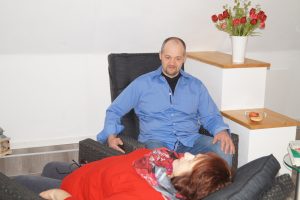
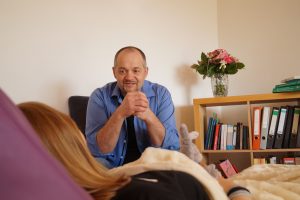
EMDR (eye movement desensitization and reprocessing) uses imaginative reactivation for trauma processing. A confrontational, relaxing, and highly supportive method using two opposing alternating sensory stimuli (induced eye movements, tapping of hands), performed with the goal of reorienting the processing and integration of traumatic experiences.
The processing of stressful memories and dysfunctional beliefs, occurs through therapeutically guided concentration on inner perception.
Neurolinguistic Programming (NLP) is a model for constructively changing the structure of subjective experience, the application of which aims to make communication or other behavior more effective, whether in everyday life or at work, in counseling, therapy or training, in negotiation situations or in sales, for oneself or for others. Neurolinguistic psychotherapy is a systemic-imaginative psychotherapy method with an integrative-cognitive approach and a sense-specific orientation. The focus is on goal-oriented work and is practiced in an individual, couple, family or group therapy setting.
EFT is a simple and easy to learn self-help method from the field of energy psychology, which causes a resolution of disturbances in the human energy flow.
The energy flow in the body is stimulated and harmonized by tapping fifteen meridian points.
A topic that contains a problem is formulated and ended with a sentence that has a positive and coherent effect on you. e.g.
“Despite the fact that I am very angry with my colleagues, I love and accept myself as I am.”
The emotion in question is rated on a scale of 0-10 and retuned after each round of tapping. You continue tapping until the desired outcome is achieved or there is noticeable relief.
Originally, PMR was developed to help neurological patients with certain diseases regain control over muscle groups. When this method was successfully used, it was then observed that with regular practice, people learn to develop what is called a relaxation response. A relaxation response is a state in which general muscle tension and heart rate decrease, as well as many other bodily functions settle around an “ideal” resting state.
This resting state is perceived as pleasant and restful and is relieving for the body. By the way, similar effects have been proven for the so-called autogenic training as well as other meditative methods.
However, autogenic training, like other meditative methods, is much more difficult to learn and usually requires many months of practice before the relaxation reaction occurs. PMR, on the other hand, can be easily learned in 2-3 weeks with regular practice! In addition, PMR can also be used as a quick, situational relaxation, while this is not so easy with the other methods! In prevention and rehabilitation as well as a complementary therapy for many somatic diseases, relaxation methods belong to the basal therapy.
The concentrative self-relaxation! The autogenic training achieves the relaxation reaction by concentration on a general relaxation signal (rest) as well as on general muscle relaxation (heaviness) and expansion of the peripheral blood vessels (warmth). The organ exercises (breathing, abdomen, heart, head) additionally serve to differentiate body awareness, centering inward and deepening relaxation.
